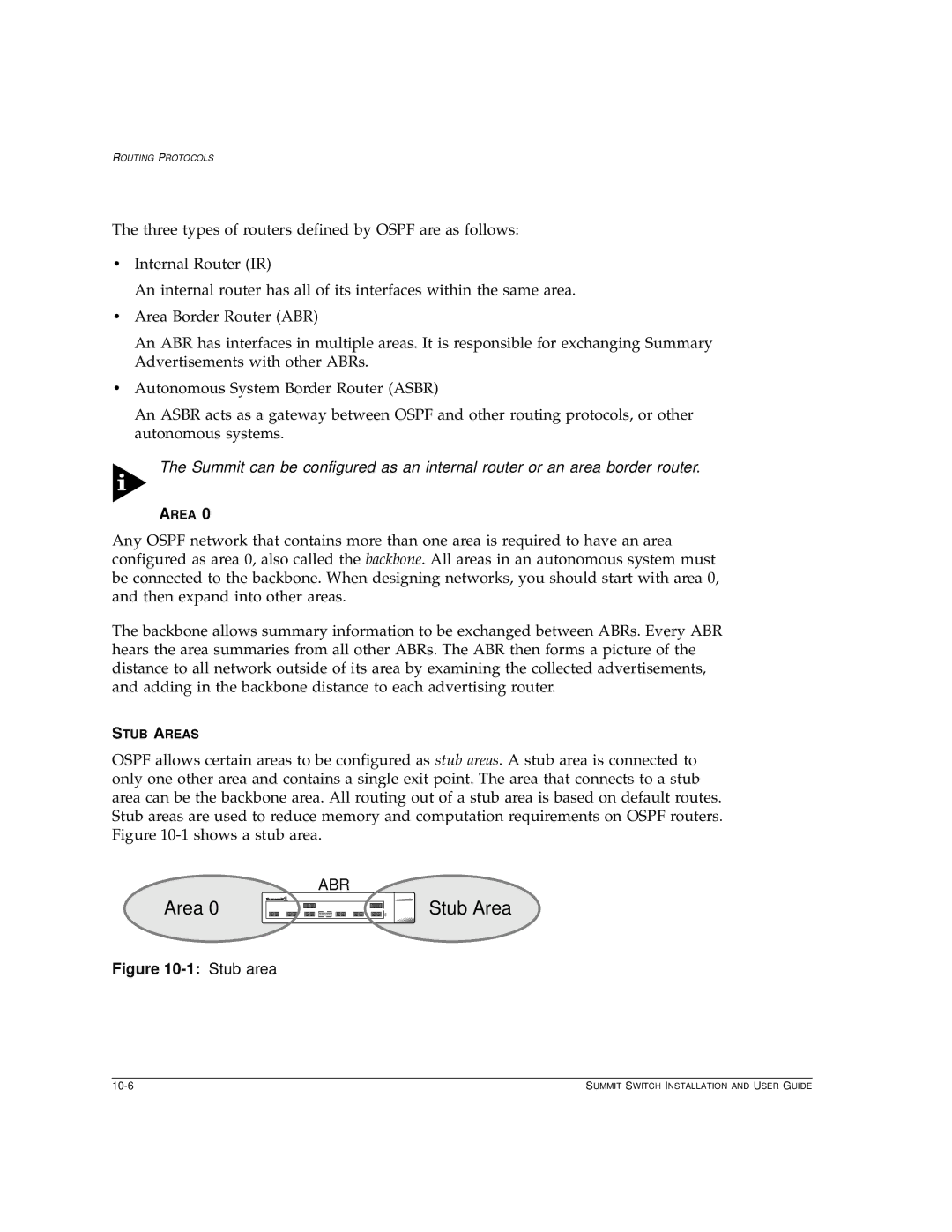
ROUTING PROTOCOLS
The three types of routers defined by OSPF are as follows:
•Internal Router (IR)
An internal router has all of its interfaces within the same area.
•Area Border Router (ABR)
An ABR has interfaces in multiple areas. It is responsible for exchanging Summary Advertisements with other ABRs.
•Autonomous System Border Router (ASBR)
An ASBR acts as a gateway between OSPF and other routing protocols, or other autonomous systems.
The Summit can be configured as an internal router or an area border router.
AREA 0
Any OSPF network that contains more than one area is required to have an area configured as area 0, also called the backbone. All areas in an autonomous system must be connected to the backbone. When designing networks, you should start with area 0, and then expand into other areas.
The backbone allows summary information to be exchanged between ABRs. Every ABR hears the area summaries from all other ABRs. The ABR then forms a picture of the distance to all network outside of its area by examining the collected advertisements, and adding in the backbone distance to each advertising router.
STUB AREAS
OSPF allows certain areas to be configured as stub areas. A stub area is connected to only one other area and contains a single exit point. The area that connects to a stub area can be the backbone area. All routing out of a stub area is based on default routes. Stub areas are used to reduce memory and computation requirements on OSPF routers. Figure
Area 0
ABR
Stub Area
Figure 10-1: Stub area
SUMMIT SWITCH INSTALLATION AND USER GUIDE |
